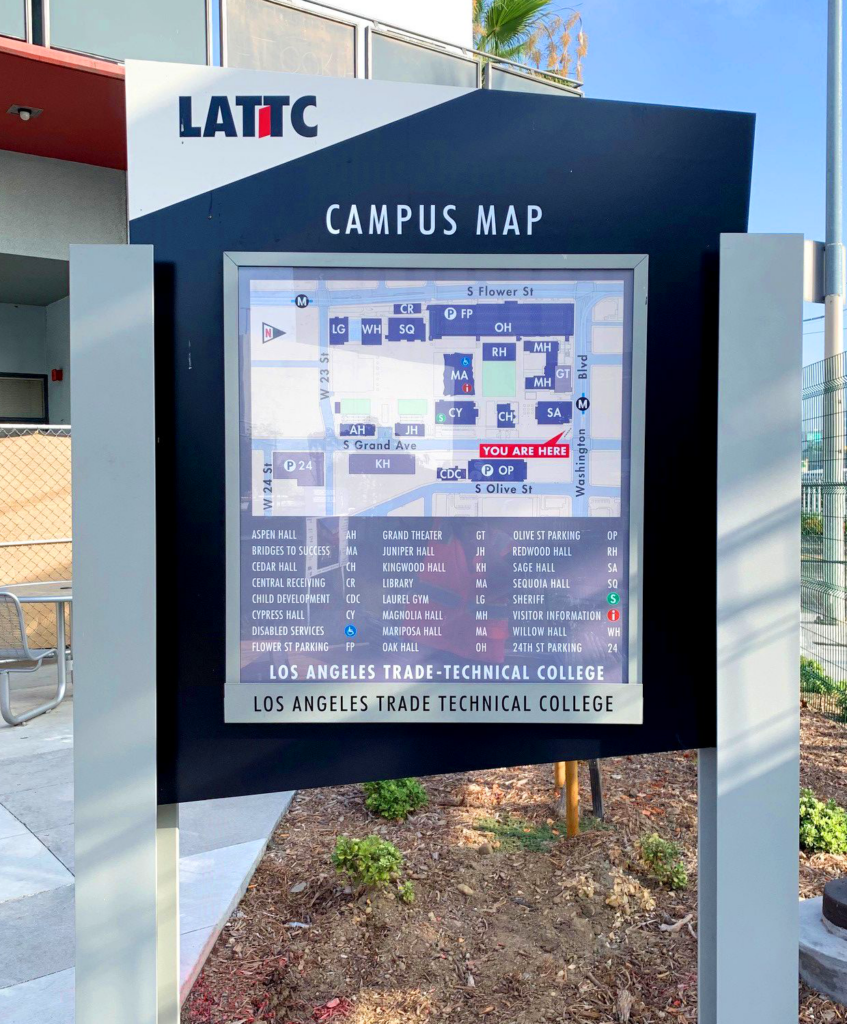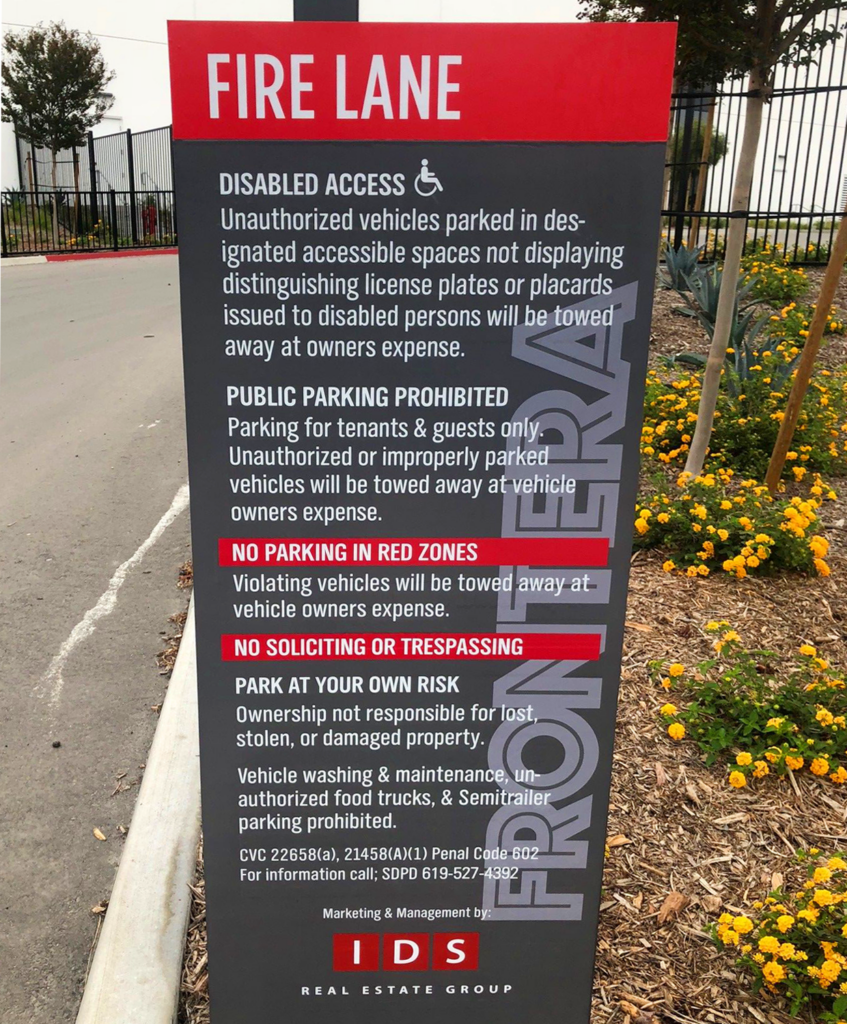Wayfinding signs in designs are essential elements in architectural design. They guide people through a space, making it easier to navigate complex buildings and outdoor areas. While their primary role is functional, wayfinding signs also contribute to the overall aesthetic and experience of a place. For architects, incorporating these signs thoughtfully can enhance both the usability and visual appeal of their projects. In the following sections, we’ll explore the importance of wayfinding in architectural design, key design principles, how to integrate them seamlessly, and practical tips for implementation.
The Role of Wayfinding Signs in Architectural Design
Wayfinding signs guide visitors through your building, making navigation clear and simple. For architects, these signs are more than just functional tools; they are design elements that enhance the entire experience of a space.
Besides directing people, wayfinding signs also contribute to the overall design and aesthetic of a building. They can emphasize the architectural features, highlight key areas, and create a cohesive environment. For example, using materials like bronze plaques and dimensional letters can turn a simple sign into an elegant architectural detail. Thoughtfully integrated wayfinding signs blend seamlessly with the design, adding to the property’s visual appeal.
Wayfinding signs are also crucial for ensuring accessibility. They help everyone, including those with disabilities, navigate effectively. ADA-compliant signs with tactile lettering and braille make sure that everyone can move around comfortably.
Key Design Principles for Effective Wayfinding Signs
Creating effective wayfinding signs involves several key design principles. First, clarity is essential. Signs must have easily readable text, so choose a clear font and appropriate size. Avoid overly fancy scripts or densely packed text. Simple and straightforward language works best, guiding visitors without confusing them.
Next, use consistent colors and symbols. A unified color scheme fosters a cohesive look and helps people quickly identify signs. Symbols should be universally recognizable, such as arrows for directions or elevator icons. Consistency across all signs ensures that visitors know where and how to find information at a glance.
Placement is another vital aspect. Signs should be positioned where they are needed most, like at decision points such as intersections and entrances. Overhead signs, wall-mounted signs, and floor graphics can all play a part in guiding people effectively. Make sure signs are visible from different angles and distances to accommodate various sight lines.
Lighting enhances visibility. Using backlit signs or well-placed lighting ensures that your signs are legible even in low-light conditions. This is especially important for exterior signs or indoor areas with dim lighting.
Finally, incorporating tactile elements for ADA compliance, like braille and raised characters, ensures that your signs are user-friendly for people with visual impairments. Applying these principles makes sure your wayfinding signs are functional, accessible, and aesthetically pleasing.
Integrating Wayfinding Signs with Architectural Aesthetics
Integrating wayfinding signs seamlessly into the architectural aesthetics of a building enhances both function and form. One effective way to achieve this is by matching the materials of the signs with those used throughout the space. For example, if your building features a lot of wood and natural elements, consider using wood or wood-like materials for your signs.
Color coordination also plays a pivotal role. Choose colors that complement the overall color scheme of the building. This not only ensures cohesiveness but also enhances visual appeal. Incorporating brand colors into wayfinding signs can unify the space and make the design look intentional.
The design of the signs should reflect the architectural style. For modern buildings, sleek and minimalistic designs with clean lines and simple fonts work best. In contrast, traditional buildings may benefit from more ornate designs with classic fonts and finishes, such as bronze plaques. Remember, the goal is to make the signs feel like a natural part of the environment rather than an afterthought.
Lastly, consider the scale and placement of the signs. They should be proportionate to the space and strategically placed where they are most needed. Avoid overcrowding areas with too many signs, as this can clutter the space and detract from the overall design.
Practical Tips for Implementing Wayfinding Signs in Projects
Effective implementation of wayfinding signs involves careful planning and attention to detail. Start with a thorough site analysis to understand the flow of foot traffic and key decision points where signs are needed. This helps strategically place signs for maximum impact.
Next, create a signage plan that outlines the type, location, and design of each sign. This plan should be detailed and include floor plans with sign placements marked. Using this method ensures that you cover all necessary areas without redundancy.
When designing the signs, adhere to accessibility standards to cater to everyone. Incorporate ADA-compliant features such as braille and tactile lettering. Additionally, ensure that the text is legible and that arrows and symbols are clear.
Testing your wayfinding system before full implementation can save time and resources. Set up temporary signs and have a few people unfamiliar with the building navigate using only the signs. Their feedback will be invaluable in identifying any gaps or areas for improvement.
Maintenance is crucial for the longevity of your wayfinding signs. Choose durable materials like aluminum, vinyl lettering, or high-density foam for indoor signs. For outdoor signs, materials like metal and weather-resistant vinyl wraps can withstand the elements. Regularly clean and check the signs to keep them looking fresh and functional.
Wayfinding signs are powerful tools that enhance both the functionality and aesthetics of architectural designs. By understanding their role, focusing on effective design principles, and integrating them harmoniously, architects can create spaces that are not only visually pleasing but also easy to navigate. Proper planning and implementation ensure that these signs meet the needs of all users, while regular maintenance keeps them looking and functioning their best.
Ready to enhance your architectural projects with expertly crafted wayfinding signs? Contact us at All Star Signs today to get started. Our experienced team will work with you to create and implement directory signages that perfectly match your design vision. Let’s make your next project shine!


